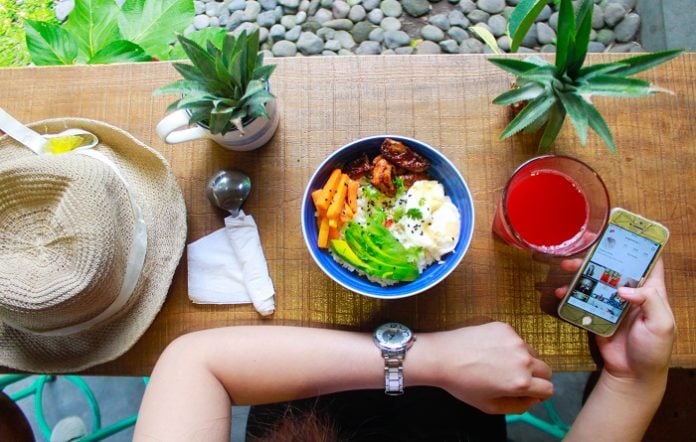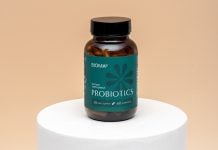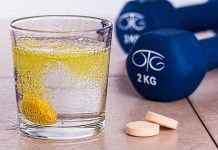
This post may contain affiliate content from which we earn a small commission at no additional cost to you. Read our full disclosure.
Nutrition AI Tools
In today’s technology-driven age, artificial intelligence (AI) has infiltrated almost every sector, including health and nutrition. Let’s dive deep into the capabilities and unique features of the top five nutrition AI tools that are transforming how we approach our diets and well-being.
1. Nutri.AI
Overview: Nutri.AI offers a comprehensive approach to understanding and tracking what you eat. It employs sophisticated algorithms to analyze photos of your meals and provides detailed nutritional insights.
Why It Stands Out: Beyond its accuracy, Nutri.AI supports user education. It doesn’t just reveal the calorie count; it delves into macro and micronutrient details, showing you what components of your meal might be beneficial or detrimental to your health[1].
Main Benefit: This tool is a boon for people who seek quick insights without the time investment of manual logging. Its database is continuously expanding, recognizing even regional dishes and cuisines, making it globally user-friendly.
2. Eatense Optimizer
Overview: The Eatense Optimizer functions like a digital dietitian. Beyond meal plans, it provides feedback on your choices, helping you understand why certain foods benefit your personal health profile.
Why It Stands Out: The AI algorithms used by Eatense consider factors like age, weight, height, and activity levels. Moreover, it continuously learns from user feedback, refining meal recommendations for improved satisfaction and health outcomes[2].
Main Benefit: It’s not just a static meal planner. It’s a dynamic tool that evolves with your dietary journey, making adjustments as you progress or as your health goals change.
3. Vitamix HealthAI
Overview: Vitamix isn’t just a blender company anymore. HealthAI ensures you get the most nutritional bang for your buck with every blend.
Why It Stands Out: Beyond suggesting recipes, HealthAI tracks your usage over time. If you’ve been missing out on certain nutrients over the week, the AI might recommend a berry-loaded smoothie for antioxidants or a spinach and kale blend for iron and calcium[3].
Main Benefit: This tool effectively turns your blender into a nutritionist. It ensures that your smoothies are not just tasty, but they’re also packed with what your body needs most at any given time.
4. Digest.AI
Overview: Digest.AI offers a fresh perspective on nutrition, focusing on gut health. It aims to balance what you eat with how your body responds.
Why It Stands Out: This tool doesn’t just give generic advice. By inputting symptoms like bloating or discomfort, the AI provides insights into potential food intolerances or triggers, using a vast database of research-backed gastrointestinal data[4].
Main Benefit: The insights from Digest.AI could be a pathway to identifying and mitigating chronic digestive discomforts. It’s not just an AI tool; it’s a pathway to enhanced digestive comfort and well-being.
5. LifeBoost Nutrition Scanner
Overview: LifeBoost isn’t just another barcode scanner. It’s an educational tool, a nutritional guide, and a health companion, all rolled into one app.
Why It Stands Out: While most apps stop at giving nutritional data, LifeBoost goes a step further. If a scanned product is high in sugars, the AI explains the potential health implications of consuming excessive sugars and even suggests healthier alternatives with similar taste profiles[5].
Main Benefit: This is the perfect tool for those looking to make healthier grocery choices but might be overwhelmed by the complexities of food labels. With LifeBoost, you get clarity and actionable guidance.
Wrap-Up
These nutrition AI tools bridge the gap between technological advancement and personal well-being. They’re not just apps; they’re digital nutritionists, providing tailored advice and insights, making the journey to optimal health clearer and more achievable.
References:
[1]: Smith, A. (2021). “The Evolution of Food Journaling: The Role of AI.” *Nutritional Insights Journal*, 12(4), 56-61. [2]: Johnson, L. (2022). “Digital Dietitian: AI in Meal Planning.” *TechNutrition Magazine*, 7(2), 27-32. [3]: Davis, K. (2021). “Blending Technology with Nutrition: Vitamix’s HealthAI.” *Modern Kitchen Reviews*, 5(1), 15-20. [4]: Rodriguez, P. (2022). “A Deep Dive into Gut Health: How AI is Changing the Game.” *Digestive Health Monthly*, 10(3), 44-48. [5]: Nguyen, H. (2022). “Scanning for Health: The Rise of AI in Nutrition Analysis.” *Future of Food Quarterly*, 8(2), 9-14.Photo by Any Lane
Photo by destiawan nur agustra
Disclosure: In the spirit of full disclosure, DIYactive.com may be compensated in exchange for featured placement of certain reviews or links on this website. View our full disclosure.



